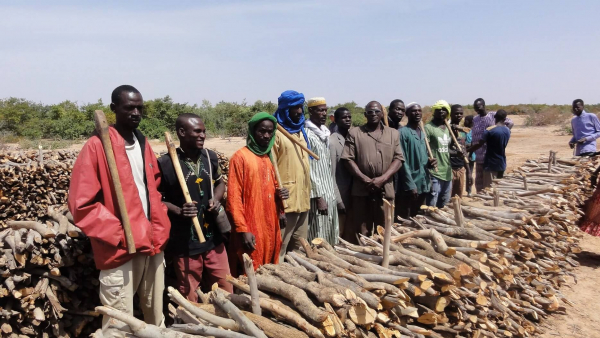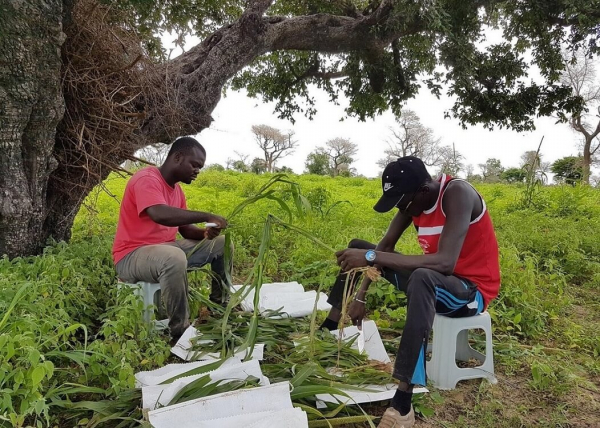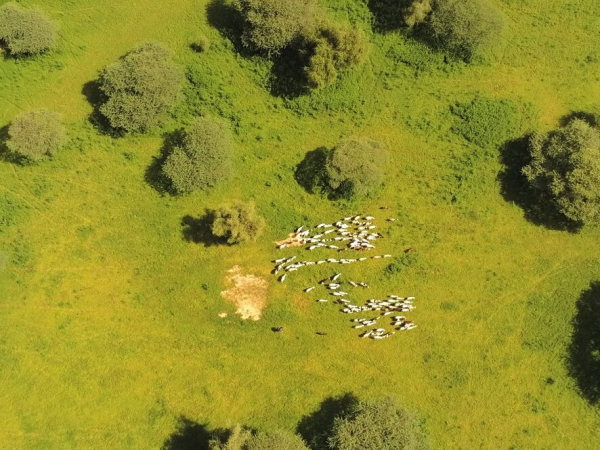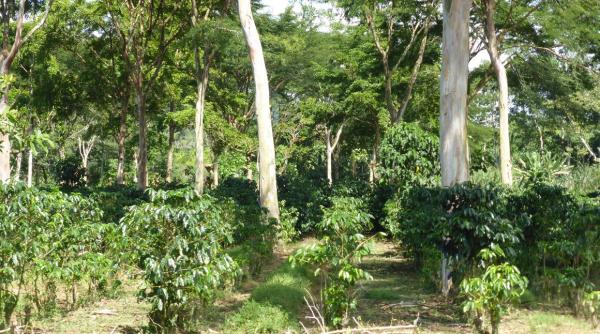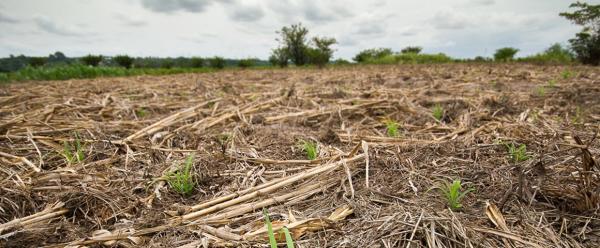Call to action 16 April 2025
- Home
- Press area
- Press releases
- land degradation Sahel CIRAD projects
Great Green Wall: land degradation in the Sahel calls for targeted, concerted responses
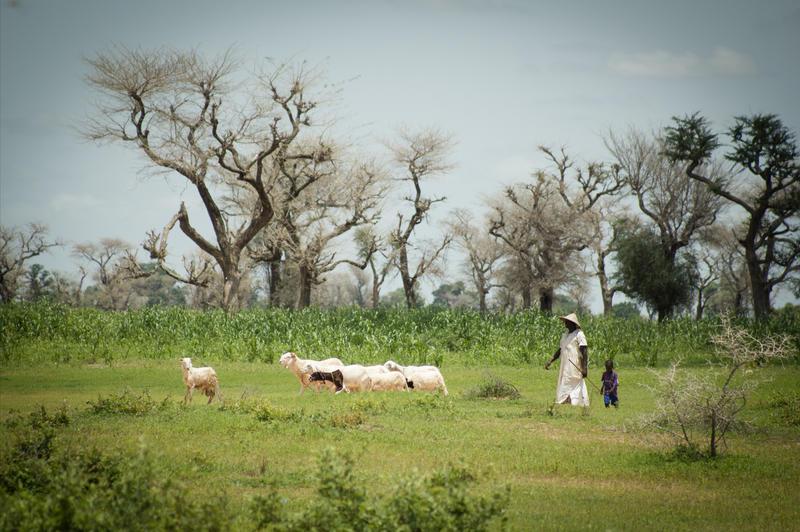
For CIRAD, fighting forest and land degradation in the Sahel necessarily means involving local people and taking account of their needs © R. Belmin, CIRAD
The Great Green Wall, officially launched in 2007, was intended to build a green strip almost 8000 km long, stretching from Senegal to Ethiopia, by 2025. The aim was to fight climate change-related land degradation in the Sahel. However, only 5% of the initial objectives have been met to date. To give the project a new lease of life, around a hundred organizations in Africa and Europe, including CIRAD, recently signed the International Agroecological Movement for Africa (IAM Africa), a charter aimed at developing agroecology on the continent.
Top-down reforestation has failed
"This renewed interest on the part of policymakers and donors in restoring degraded land and ecosystems in the Sahel is really good news" , says CIRAD researcher Amah Akodewou. "However, we recommend taking primarily social, participatory approaches rather than the top-down approaches taken in the past."
For Amah Akodewou and his colleagues, any operations that do not involve local stakeholders are doomed to fail. "In many cases, zones were chosen and species planted without taking account of users' know-how or needs. These programmes have been an economic, social and ecological waste of time, since they did not respect local people's land use rights or the natural vegetation." As Plinio Sist, Head of CIRAD's Forests and Societies research unit, points out, planting trees is not as simple as it looks, particularly in the Sahel: "Saplings need care and attention for the first few years, and this can only be done with the approval and involvement of local communities".
So how can we fight forest and land degradation in the Sahel by involving local people and taking account of their needs? The answer lies in three examples.
Reconciling energy demand, poverty alleviation and forest conservation in the Sahel
Since 2014, the FONABES* project, coordinated by CIRAD, has been working to organize sustainable domestic energy (firewood and charcoal) supplies) to the cities of Ouagadougou (Burkina Faso), Niamey (Niger) and Bamako (Mali). Demand for fuelwood in the Sahel is growing in line with population growth in the zone. Daily energy consumption, for cooking or heating, exerts substantial pressure on forest resources, and increased logging is one of the main causes of forest and land degradation in the region.
Conserving Sahelian forest ecosystems is one of the main objectives of FONABES, and the project intends to do this by improving living standards for rural communities. FONABES is determined to ensure that revenue and profits are shared fairly between the various stakeholders in the wood supply chain: woodcutters and charcoal producers, villages, traders/hauliers, urban wholesalers and lastly consumers.
"For some rural communities, the income generated by cutting and selling fuelwood is a matter of survival", Pierre Montagne, agroeconomist at CIRAD, reminds us. "Those communities have no reason to invest in sustainable resource management operations if they are not going to benefit."
FONABES is due to end in 2021. Assisted natural regeneration operations are subsequently planned in the Niamey region in Niger, to develop agroforestry and respond to growing energy demand in rural areas.
Ensuring that income and profits are shared fairly between the various stakeholders in the wood supply chain - woodcutters (here, in Niger) and charcoal producers, villages, traders/hauliers, urban wholesalers and lastly consumers - is one of the objectives of the FONABES project © P. Montagne, CIRAD
Agroecology can ensure sustainable agricultural intensification in the Sahel
Population growth in the Sahel has necessarily meant increased demand for food, which has exacerbated the pressure on farming systems already threatened by climate change. In the light of this, intensifying those farming systems is a priority. Agroecology, the option chosen by the FAIR ** project launched in Burkina Faso, Senegal and Mali in 2020, is assumed to be one of the best ways of reconciling agricultural intensification and natural resource conservation.
"Over four years, we will be working with farmers to introduce agroecological innovations that will improve their living standards while being less of a burden on natural resources", says CIRAD's Eric Scopel, a specialist in agroecological transitions. "Above all, the originality of the project lies in the decision to take a fresh look at the collective processes at play between producers and R&D players, to ensure that innovations are taken on board long term in rural areas."
PhD students gathering and cutting up millet in Niakhar, Senegal, to assess biomass production in an experimental agroforestry plot © C. Dangléant, CIRAD
Agroecological intensification provides farmers with a decent wage and local people with healthy food, while protecting natural resources. Smallholders in three Sahel countries will be able to use these new methods to improve their standard of living and make their farms more resilient.
Agro-silvo-pastoral ecosystems can foster carbon capture in the Sahel
The tree plantings planned for the Great Green Wall were supposed to help improve carbon storage capacity in the Sahel, while fighting land and landscape degradation. However, this is also one of the advantages of pastoralism, on which the CASSECS *** project is working. It is being implemented in six Sahel countries (Senegal, Burkina Faso, Niger, Mali, Mauritania and Chad), and aims to quantify the impact of livestock production on climate change and contribute to the drafting of suitable livestock production policies in the region.
In the Sahel, pastoral livestock production makes effective use of an extreme environment. While it is often accused of emitting too much greenhouse gas per kilogram of milk or meat produced, research in Senegal has shown that pastoral territories may in fact be carbon-neutral: emissions of animal origin are cancelled out by carbon capture in the soil and vegetation.
Through the CASSECS project, led by the Institut sénégalais de recherches agricoles (ISRA), field teams are working with livestock farmers to design efficient agropastoral systems and to help disseminate good practice to other territories with similar characteristics. As a partner in CASSECS, CIRAD is also working on advocacy operations targeting national and international players, to ensure that the merits of agropastoral systems for the region are recognized.
"Pastoral mobility in the Sahel is one of the keys to preserving both local communities and ecosystem balance", says CIRAD's Paulo Salgado, a specialist in the integration of crop and livestock farming activities. "By the end of the CASSECS project in 2023, we hope we will have changed the view that agropastoral livestock farming has a negative impact on the environment."
Despite the fact that 200 million livestock farmers and their families worldwide make a living from pastoralism, the activity remains largely unknown. However, it makes a far from negligible contribution to national GDP, particularly since it also provides a range of services © S. Taugourdeau, CIRAD
In their own way, each of these three projects is helping to fight land degradation in the Sahel, by improving living standards for local people. Far from having a single, uniform vision of the Sahel, FONABES, FAIR and CASSECS acknowledge the wealth and the diversity of countries, regions and practices in the zone. If it is to give a new lease of life to the Great Green Wall, the IAM Africa initiative must support projects built hand-in-hand with local people.
* The FONABES project has a budget of € 1 500 000 from the Fonds français pour l’environnement mondial (2014-2019) and € 350 000 from the Agence française de développement (2020-2021).
** The FAIR project is co-funded to the tune of 9 million euros by the European Union and Agence française de développement.
*** The CASSECS project has 2 million euros of funding from the European Union.

























